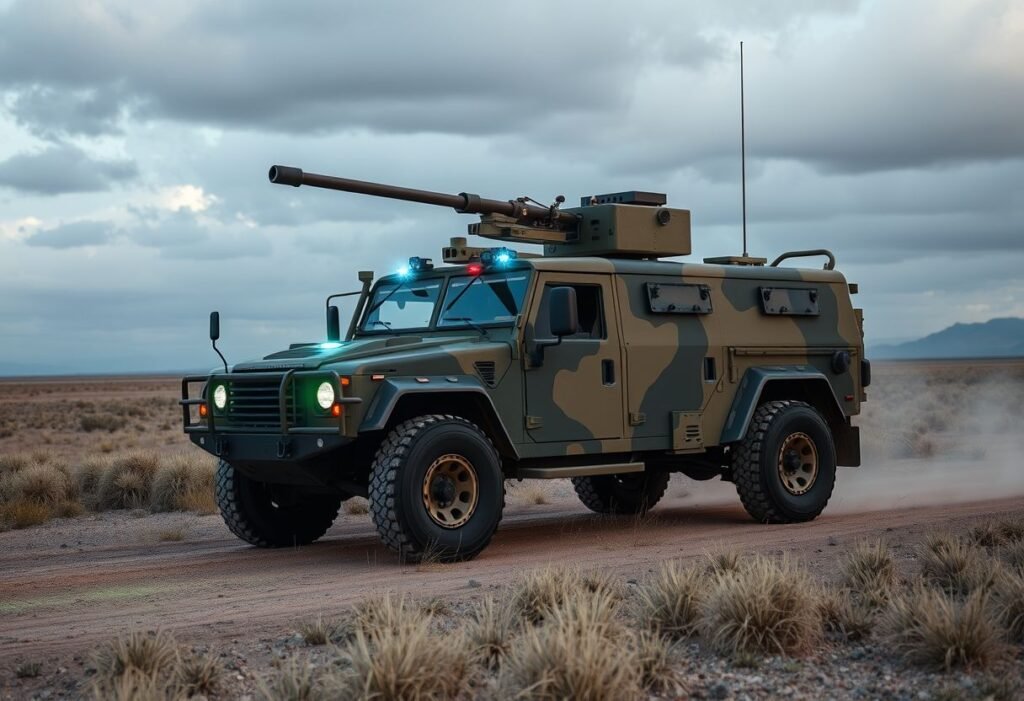Recently, the integration of advanced weaponry has become pivotal in modern defense strategies. This article examines the successful field tests of a novel laser weapon mounted on a British Army vehicle, highlighting its significance in the evolving landscape of military technologies.
The Next Step in Military Innovation
The introduction of laser systems into battlefield scenarios marks a revolutionary shift in military capabilities. The United Kingdom’s recent field tests of a laser weapon, mounted on the robust Wolfhound armored vehicle, exemplify this transition. This weapon, part of the Land Laser Directed Energy Weapon (LDEW) Demonstrator program, is engineered to effectively combat emerging threats such as drones. By harnessing directed energy, these laser systems offer a versatile solution, enhancing the operational efficiency of ground forces while offering a non-lethal option against enemy equipment.
Transforming Battlefield Tactics
As warfare continues to evolve with technological advancements, the implementation of directed energy weapons reshapes tactical approaches on the battlefield. The laser weapon system provides a means to engage and neutralize threats without the collateral damage associated with traditional munitions. This capability is particularly appealing in urban combat scenarios, where precision is paramount. The tests conducted on the Wolfhound armored vehicle underscore the British Army’s commitment to integrating innovative technologies to enhance mission effectiveness and minimize risk.
The Mechanics of Laser Weapons
Understanding the scientific principles behind laser weapons sheds light on their potential applications. Laser systems utilize focused beams of light to precisely target and incapacitate enemy assets. This high-energy approach results in immediate effects, which can be critical in fast-paced conflict environments. The LDEW Demonstrator program explores various power outputs and targeting mechanisms, ensuring that future deployments can adapt to diverse operational requirements. This scalability enhances their applicability across different military engagements.
Potential Applications in Modern Warfare
Beyond engagement with drones, laser weapons possess a wide array of applications in contemporary military operations. These systems can serve not only in defense but also in offensive operations against enemy installations. The ability to disable electronics without traditional ordnance demonstrates their potential to disrupt enemy operations effectively. Furthermore, the operational costs associated with laser weapons are expected to be significantly lower compared to conventional weaponry, providing long-term economic advantages for military budgets.
Challenges Facing Laser Weapon Implementation
Despite their promise, there are several challenges that the military faces in implementing laser weapon systems effectively. Technical hurdles remain in energy storage and management, with current systems requiring significant power inputs. Additionally, atmospheric conditions can affect laser beam performance, limiting effectiveness in various weather scenarios. Addressing these limitations is crucial for maximizing the efficacy of laser technologies on the battlefield and ensuring reliability in critical situations.
Looking Ahead: The Future of Military Technology
The successful field tests of the laser weapon mounted on the Wolfhound vehicle herald a new era of military technology. As further enhancements are developed within the LDEW Demonstrator program, the strategic implications for defense organizations worldwide will be profound. The integration of laser weapons into broader military frameworks could redefine engagement strategies, offering enhanced precision and control in modern warfare. The trajectory towards sophisticated military weapon systems is clear, marking an important transition towards a more technologically advanced future.
Disclaimer: The information provided in this article is for informational purposes only and does not endorse any specific military technology or its deployment.





















